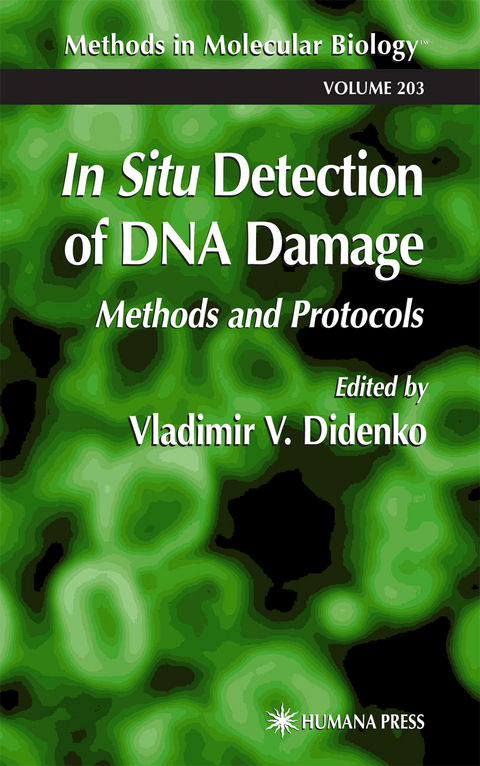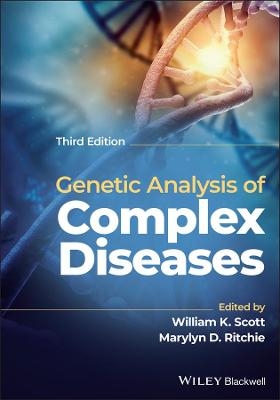
In Situ Detection of DNA Damage
Humana Press Inc. (Verlag)
978-0-89603-952-0 (ISBN)
Detection and analysis of DNA damage is of critical importance in a variety of biological disciplines studying apoptosis, cell cycle and cell di- sion, carcinogenesis, tumor growth, embryogenesis and aging, neu- degenerative and heart diseases, anticancer drug development, environmental and radiobiological research, and others. Individual cells within the same tissue or in cell culture may vary in the extent of their DNA damage and, consequently, can display different re- tions to it. These differences between individual cells in the same cell popu- tion are detected using in situ approaches. In situ is a Latin term meaning “on site” or “in place.” It is used to denote the processes occurring or detected in their place of origin. In mole- lar and cell biology this usually refers to undisrupted mounted cells or tissue sections. In that meaning “in situ” is used as part of the terms “in situ PCR,” “in situ transcription,” “in situ hybridization,” “in situ end labeling,” and “in situ ligation.” Sometimes the “in situ” term is applied at the subcellular level to cells disrupted in the process of analysis, for example, in the detection of specific sequences in chromosomes using fluorescent in situ hybridization (FISH). Historically, the term was used primarily in methods dealing with nucleic acids.
Labeling DNA Breaks Using Terminal Transferase (TUNEL Assay).- Labeling DNA Damage with Terminal Transferase.- TUNEL Assay.- Electron Microscopic Detection of DNA Damage Labeled by TUNEL.- Quantitative Differentiation of Both Free 3? OH and 5? OH DNA Ends Using Terminal Transferase-Based Labeling Combined with Transmission Electron Microscopy.- Determination of Three-Dimensional Distribution of Apoptotic DNA Damage by Combination of TUNEL and Quick-Freezing and Deep-Etching Techniques.- In Situ Detection of DNA Strand Breaks in Analysis of Apoptosis by Flow- and Laser-Scanning Cytometry.- Labeling DNA Breaks Using DNA Polymerase I or its Klenow Fragment.- DNA Damage Detection Using DNA Polymerase I or its Klenow Fragment.- Labeling DNA Breaks In Situ by Klenow Enzyme.- In Situ Nick Translation at the Electron Microscopic Level.- Labeling DNA Breaks Using Ligase.- In Situ DNA Ligation as a Method for Labeling Apoptotic Cells in Tissue Sections.- Detection of Specific Double-Strand DNA Breaks and Apoptosis In Situ Using T4 DNA Ligase.- In Situ Detection of Double-Strand DNA Breaks with Terminal 5?OH Groups.- Detection of DNA Breaks in Agarose Trapped Cells: Comet Assay and Related Techniques.- The Comet Assay.- The Comet Assay.- Ultrasensitive Detection of DNA Damage by the Combination of the Comet and TUNEL Assays.- Application of FISH to Detect DNA Damage.- Detection of Modified Bases and AP Sites in DNA.- Simultaneous In Situ Detection of DNA Fragmentation and RNA/DNA Oxidative Damage Using TUNEL Assay and Immunohistochemical Labeling for 8-Hydroxy-2?-Deoxyguanosine (8-OHdG).- The In Situ Detection of Apurinic/Apyrimidinic Sites and DNA Breaks Bearing Extension Blocking Termini.- Indirect and General Markers of DNA Damage.- Markers of Poly (ADP-Ribose)Polymerase Activity as Correlates of DNA Damage.- Ultrasound Imaging of Apoptosis.- p53 Induction as an Indicator of DNA Damage.- Detection of Caspases Activation In Situ by Fluorochrome-Labeled Inhibitors of Caspases (FLICA).
| Erscheint lt. Verlag | 30.4.2002 |
|---|---|
| Reihe/Serie | Methods in Molecular Biology ; 203 |
| Zusatzinfo | 31 Illustrations, color; 133 Illustrations, black and white; XVII, 313 p. 164 illus., 31 illus. in color. |
| Verlagsort | Totowa, NJ |
| Sprache | englisch |
| Maße | 155 x 235 mm |
| Themenwelt | Medizin / Pharmazie ► Medizinische Fachgebiete |
| Studium ► 2. Studienabschnitt (Klinik) ► Humangenetik | |
| Naturwissenschaften ► Biologie ► Mikrobiologie / Immunologie | |
| Naturwissenschaften ► Biologie ► Zellbiologie | |
| ISBN-10 | 0-89603-952-8 / 0896039528 |
| ISBN-13 | 978-0-89603-952-0 / 9780896039520 |
| Zustand | Neuware |
| Haben Sie eine Frage zum Produkt? |
aus dem Bereich


